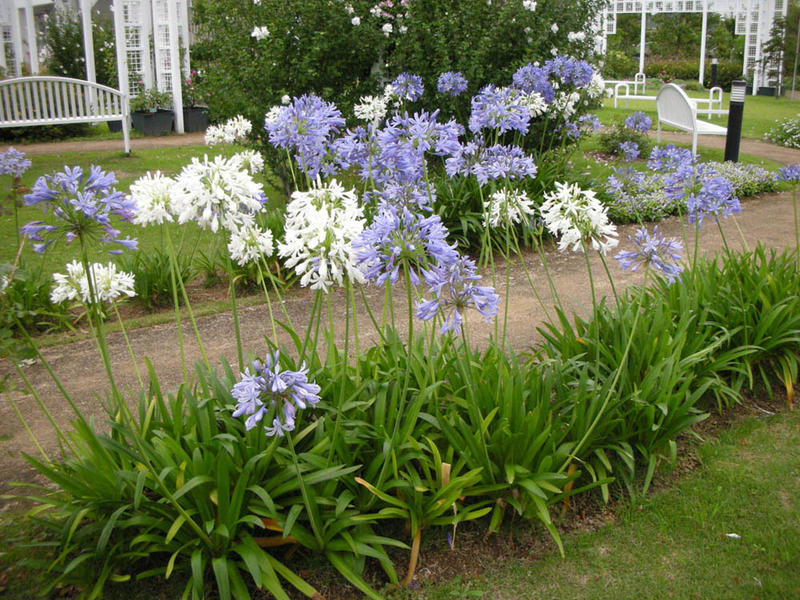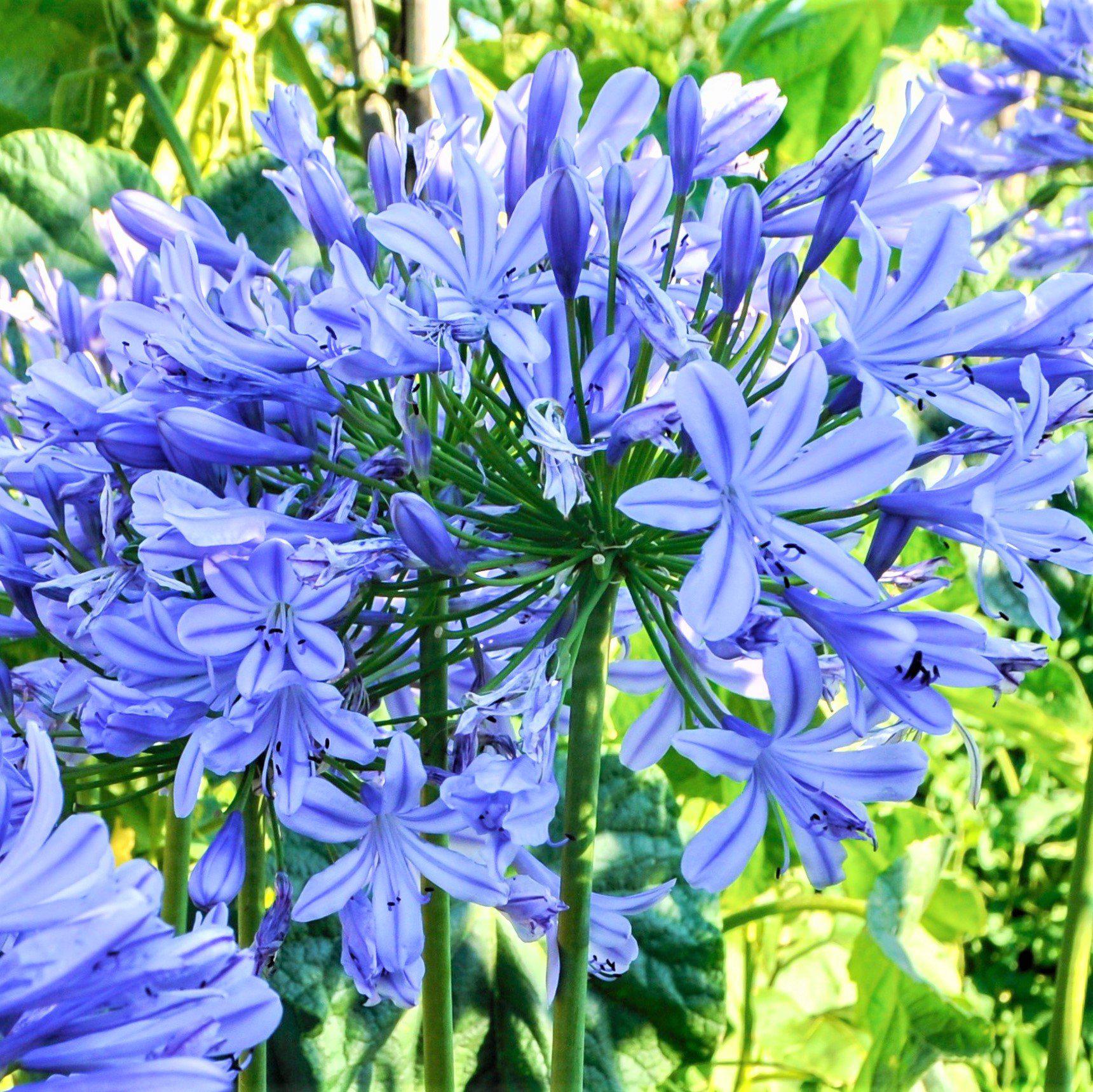Stunning Agapanthus: Enhancing Your Yard's Appeal
Stunning Agapanthus: Enhancing Your Yard's Appeal
Blog Article
Unleashing the Secret to Effective Agapanthus Cultivation: Tips and Techniques for a Flourishing Garden
In the world of gardening, growing agapanthus efficiently requires a critical strategy that incorporates numerous facets of plant care. By understanding the nuances of agapanthus growing, one can produce an environment where these plants thrive and bloom abundantly.
Growing Agapanthus: Best Practices
When planting Agapanthus, correct dirt preparation is essential for making sure effective growth and development of these gorgeous blossoms. Agapanthus, generally known as Lily of the Nile or African lily, flourishes in well-draining dirt with a somewhat acidic to neutral pH degree - Agapanthus. Before growing, it is important to modify heavy clay dirts with raw material such as garden compost or peat moss to boost drainage and offer vital nutrients for the plants
To plant Agapanthus, pick an area that receives full sunshine to partial shade, as this will certainly promote healthy and balanced growth and bountiful flowering. Dig a hole twice the size of the plant's root sphere and place the Agapanthus at the very same depth it was formerly expanding. Gently backfill the opening with dirt, pushing down strongly to eliminate any type of air pockets around the roots.
Water the freshly planted Agapanthus completely and proceed to maintain the dirt evenly damp, particularly during the plant's energetic expanding period. Agapanthus. Applying a well balanced fertilizer once a month can better support the plant's development and blooming. By complying with these ideal techniques for planting Agapanthus, you can produce a sensational display of these captivating blossoms in your yard
Perfect Dirt Conditions for Agapanthus
For optimal development and growing success of Agapanthus plants, guaranteeing the dirt problems are ideal is important. Agapanthus favors soil that is rich in nutrients, so integrating a well balanced fertilizer throughout the expanding season can advertise healthy and balanced growth and dynamic blooms.

Watering and Feeding Tips
To guarantee healthy development and vibrant flowers, correct watering and feeding methods are necessary for effective Agapanthus cultivation. Agapanthus plants profit from regular watering, especially during the growing season.
When it involves feeding Agapanthus, a well balanced plant food with equivalent components nitrogen, phosphorus, and potassium can be used in the spring to advertise healthy and balanced growth and flowering. Slow-release fertilizers are excellent for supplying nutrients gradually over a prolonged period. Avoid over-fertilizing, as this can cause too much foliage growth at the expenditure of blooms.
Additionally, incorporating natural matter like garden compost into the dirt can enhance nutrient degrees and enhance soil framework, helping in the total health of the Agapanthus plants. By complying with these watering and fertilizing tips, gardeners can guarantee their Agapanthus plants prosper and create magnificent display screens of blossoms.
Pruning and Deadheading Methods
Appropriate pruning and deadheading methods play a critical role in keeping the wellness and aesthetics of Agapanthus plants, matching the necessary techniques of watering and fertilizing for successful farming. Pruning Agapanthus involves getting rid of invested flower heads, yellowing or dead fallen leaves, and general shaping of the plant to find more info promote much better development. Deadheading, the procedure of eliminating faded flowers, not only enhances the plant's look click here for info but additionally encourages more flowering.
When deadheading Agapanthus, it is suggested to clip off the blossom stem at the base utilizing sharp, tidy shears. This process redirects the plant's energy from seed production back right into root and foliage growth, promoting a healthier and a lot more durable plant. Routine deadheading can prolong the flowering period of Agapanthus and avoid self-seeding, which can cause congestion.
In regards to trimming, Agapanthus typically advantages from a light trim after blossoming to clean the plant and urge fresh growth. Reducing the invested flower stems and removing any type of dead or broken foliage assists preserve the plant's vigor and general look. Nonetheless, it is important to avoid cutting into the crown of the plant, as this can deteriorate its wellness.

Protecting Agapanthus From Vermins and Diseases
Carrying out efficient parasite and illness management strategies is important to securing the wellness and vigor of Agapanthus plants in farming. Agapanthus are generally sturdy plants, however they can still succumb various parasites and diseases if not correctly taken care of. One usual insect that influences Agapanthus is the Agapanthus borer, a browse this site caterpillar that passages into the plant, triggering damage to the flowers and leaves. To prevent problems, normal inspection of the plants is essential. If borers are spotted, they can be manually removed, or insecticidal soap can be utilized as a control measure.
In addition to bugs, Agapanthus are prone to diseases such as root rot and fungal leaf spots. These issues can commonly be prevented by making certain appropriate drain and preventing overwatering. If signs of disease appear, affected parts of the plant must be promptly gotten rid of to prevent additional spread. Fungicides might likewise be made use of as a therapy measure, adhering to the producer's directions carefully. By staying watchful and resolving bug and disease issues without delay, gardeners can aid their Agapanthus grow and grow.

Verdict
To conclude, effective growing of agapanthus requires correct growing techniques, excellent soil problems, sufficient watering and fertilizing, normal pruning and deadheading, and protection from diseases and parasites. By adhering to these tips and tricks, gardeners can guarantee a prospering garden full of beautiful agapanthus blooms. Agapanthus. Keep in mind to preserve regular care and focus to information to promote the health and wellness and longevity of these spectacular plants
When growing Agapanthus, correct dirt prep work is necessary for ensuring successful growth and advancement of these gorgeous blossoms.Water the recently grown Agapanthus completely and continue to keep the dirt evenly wet, specifically throughout the plant's active expanding season.For ideal development and flowering success of Agapanthus plants, making certain the soil problems are ideal is critical. When hair transplanting or planting Agapanthus, make certain the soil is well-prepared to offer the needed structure for the plants to develop themselves successfully. One usual insect that affects Agapanthus is the Agapanthus borer, a caterpillar that tunnels right into the plant, creating damage to the fallen leaves and blossoms.
Report this page